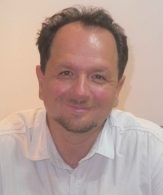
RACOCEANU Daniel
Title: Professor of Universities
Function: PI
Affiliated entities Sorbonne Université, AP-HP
Professor at Sorbonne University, and PI of the INRIA-ARAMIS team of Paris Brain Institute (CNRS UMR 7225 – Inserm U 1127), he carries out these teachings in the field of medical image analysis, shape recognition and machine learning (including deep learning), focusing his research in the field of integrative numerical pathology, and in particular on the creation of new paradigms and protocols and technologies for gradation and gradation. prognosis in histopathology, at the boundaries between imaging and omics.
Semantic exploration and Understanding of the major bases of Microscopic Images at High Content. Computational integrative Histopathology.
This work focuses on the understanding, analysis, modelling and simulation of the tumour microenvironment, using the virtual blade images from histopathology (digital pathology) as a reference.
By understanding and modelling the elements indexed by pathologists in the analysis of intra-tumour heterogeneity, we are currently able to construct mathematical models capable of providing local and spatial quantification of processes, allowing a holistic approach to the pathological landscape.
In cancers, the objective is to correlate and consolidate the phenotypic signature with an omics signature (integrative computational pathology) within the tumor genesis process. The tools studied, developed and used in this research are mathematical morphology on sparse ensemble (simplicial complexes), scalable stochastic models (Markovian point processes), biomedical semantics and deep learning.
What concerns me from a methodological point of view is the combination of these tools (generative - discriminatory), in a global approach that can be traced and explained, capable of creating a break and an acceleration of the adoption of DL tools in the biomedical field. This work resulted in a project funded by AVIESAN - ITMO Cancer entitled MALMO (Mathematical Approaches to Modelling Metabolic Plasticity and Heterogeneity in Melanoma) dedicated to mathematical approaches to modeling metabolic plasticity and heterogeneity in melanoma.
Furthermore, around these skills in the field of computational histopathology, a recent part of this work within Paris Brain Institute concerns the correlation between Tau proteins (neurites, tangles and plaques - known to be part of the symptoms of Alzheimer’s disease) observed at the microscopic level, in grey matter, and the stratification of patients with Alzheimer’s disease. A Big Brain Theory (BBT) project entitled STRATIFIAD (Refining Alzheimer Disease Patients’ stratification using interpretable AI) has been funded, in a competitive framework, around these topics for a period of 2 years (2021-2023).

